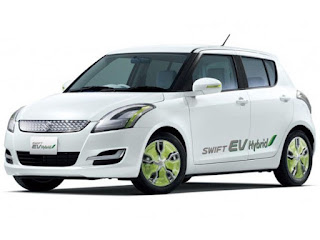Here are 10 more EV market predictions for 2012, this time from Pike Research in their white paper Electric Vehicles: Ten Predictions for 2012. It’s forecasting the global EV market to reach 250,000 vehicles worldwide next year. Here’s a synopsis of their predictions from investmentu.com:
#1 The global availability and increasing sales of EVs will put an end to the “Are they for real?” speculation.
Pike believes 2012 will be the transitional year for EVs, as more models become available, and even more are announced.
#2 Car sharing services will expand the market for EVs and hybrids.
Right now, at least 10 car-sharing services are offering EVs to rent. Car sharing appeals to younger, environmentally conscious urban dwellers. Avis and Hertz are the most recognizable names, and more are jumping on this hot trend all the time.
#3 Battery production will get ahead of vehicle production.
Numerous battery companies have factories geared up to produce more batteries than manufacturers can use. Delayed model launches and slow consumer acceptance will likely result in battery prices dropping faster than expected (good news). Some manufacturers are directing excess capacity towards the grid energy storage market, also in its nascent stages.
#4 Road tax legislation in the United States that will require PEV owner contributions will fail.
Right now, PEV owners who bypass the gas station won’t be paying any road use taxes, which are part of every gallon of gas purchased. A number of state bills that would force owners to pay a vehicle miles traveled (VMT) tax have died on the vine.
A yearly fee based on average miles driven will ultimately be the tax that will pass.
#5 The Asia-Pacific region will become the early leader in vehicle-to-grid (V2G).
Since EV penetration will be highest here before anywhere else, V2G will be implemented here first, and quickly dominate the market. The unreliability of the grid in this region will be greatly improved with the use of V2G technology.
#6 PEV prices will continue to disappoint many consumers.
Early adopters will pay more. The battery glut, if it shows up at all, won’t be reflected in EV prices before 2013 or 2014. Early adopters will pay for the huge investment that EV companies made in assembly lines and battery and motor technology.
Ultimately, we could see prices in the low $20,000 range, but that target is a few years out.
#7 Third-party EV charging companies will dominate public charging sales.
Grocery stores, drug stores and other commercial establishments looking to attract EV owners have two choices. They can purchase and maintain the charging equipment themselves, set the fee structure, or give the power away free in order to attract customers.
The alternative is to have a third party install and maintain it. Pike feels this will be the more attractive of the two. Wal-Mart, Icon Parking Group and Simon Property Group (large mall owner) are all opting for the third-party route.
#8 Germany, South Korea and Japan will see the most progress towards the commercialization of fuel cell vehicles (FCVs) in 2012.
According to Pike, 2015 marks the start of the commercial rollout of FCVs. But it won’t be here in the United States. The Department of Energy’s shift away from FCVs towards EVs leaves some uncertainty in their adoption here.
#9 Employers will begin to purchase EV chargers in large numbers.
Companies who want to attract young professionals with EVs will begin to install them in large numbers. Already Google, Adobe, SAP and others have installed dozens at their U.S. facilities. 2012 will see hundreds of other global companies following their lead.
Sales in North America could exceed 5,000 units, while the Asia Pacific region could hit 18,000, according to Pike’s report.
#10 EVs will begin to function as home appliances.
Pike reports that many automakers are adopting the HomePlug Green PHY communications standard. This will allow information about the EV to be passed over the power line to other smart grid enabled devices, insuring they don’t all turn on at the same time.













